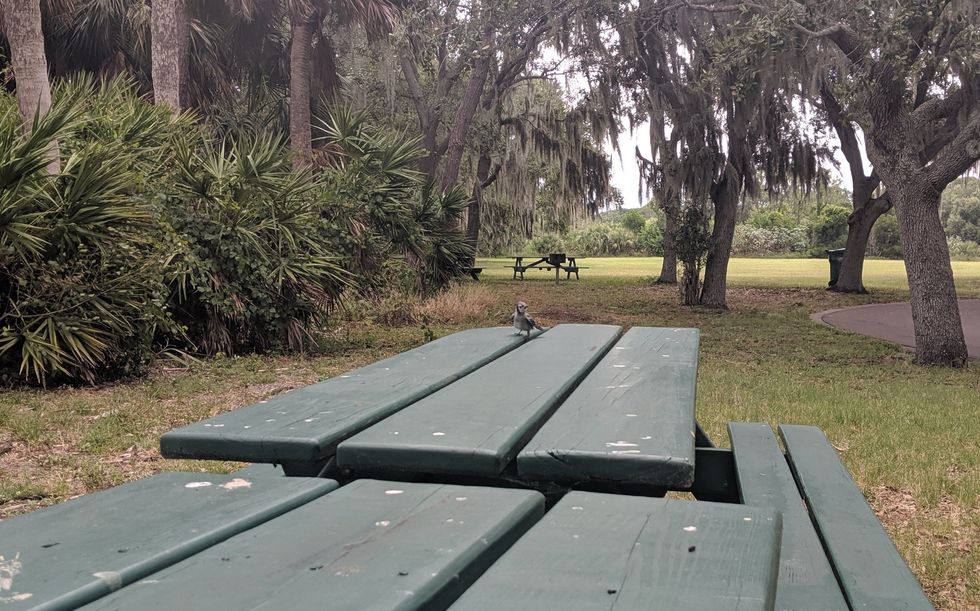A blue Jay fledgling lands near me. It looks like a mini blue Jay. It still has downy fluff along its back and a cute light face with a dark stripe down to its beak. Its face coloring reminds me of penguin chicks I have studied many times.
The young blue Jay sits on the ground, quietly looking around, taking in its new surroundings. For a moment I worry, where are its parents? Something so small and vulnerable, what if the grackle swooping around harass it? Or what if a hawk catches it for dinner. I keep an eye on the little bird just in case.
I have seen adult blue jays many times. They are bold birds, who aren't afraid to stand up for themselves tolerating no harassment from the other animals around.
When I was young, we had a cat with tan and white blotches. We named him Simba. He was a year younger than me and spent half his day wandering ours and our neighbors' yards. A blue jay lived in a tall tree and possibly had a nest in my grandma's yard next door. Simba though it was a bright idea to test out his hunting skills on the blue jay and proceeded to climb the tree. He's usually not so bold to climb a tree. Instead of fleeing like most birds do when they see a cat, the blue jay met Simba on the thick low branch and began screaming at the cat and pecking him viciously. So, to not get his eyes picked out, Simba was forced to retreat. He learned his lesson that day, and when he heard the blue Jays screaming, "cat!" He ignored their taunts and searched for easier prey.
As I watch the fledgling, I wonder if it has yet learned the predator fighting skills of its parents. The fledgling sits in the grass calmly, not making a sound. Then it hops on the picnic bench next to me. The boat-tailed grackle and squirrels become curious about the young bird, who flutters away when they get too close.
Maybe part of the fledgling's calmness is because he knows his parents are nearby and keeping a close protective eye on their young and sure enough they are. One parent stands on a tree nearby and lets out its shrill calls that tell all others to keep a distance. The parent comes to its young. The baby knows just what to do from weeks of practice, open his beak wide, and beg for food. The parent obliges. Then flies back to the tree. After enough irritation from squirrels, the fledgling does the best he can with his new little flight feathers to fly to the tree where its parents are. He lands at the base of the tree and sits there, receiving care from his parents.
I notice at least one other fledgling on a nearby branch; the parents go back and forth feeding them. I read that blue jay fledglings commonly leave their nest after a few weeks even before they fly to explore and escape their crowded living courters. But the parents continue to protect and feed them until they are ready to be on their own.
I am now confident the young bird is well cared for. After all, it is a blue jay.
LifestyleJun 29, 2019
Watching A Blue Jay Fledgling
My observations of these colorful and fearless birds.
34



















